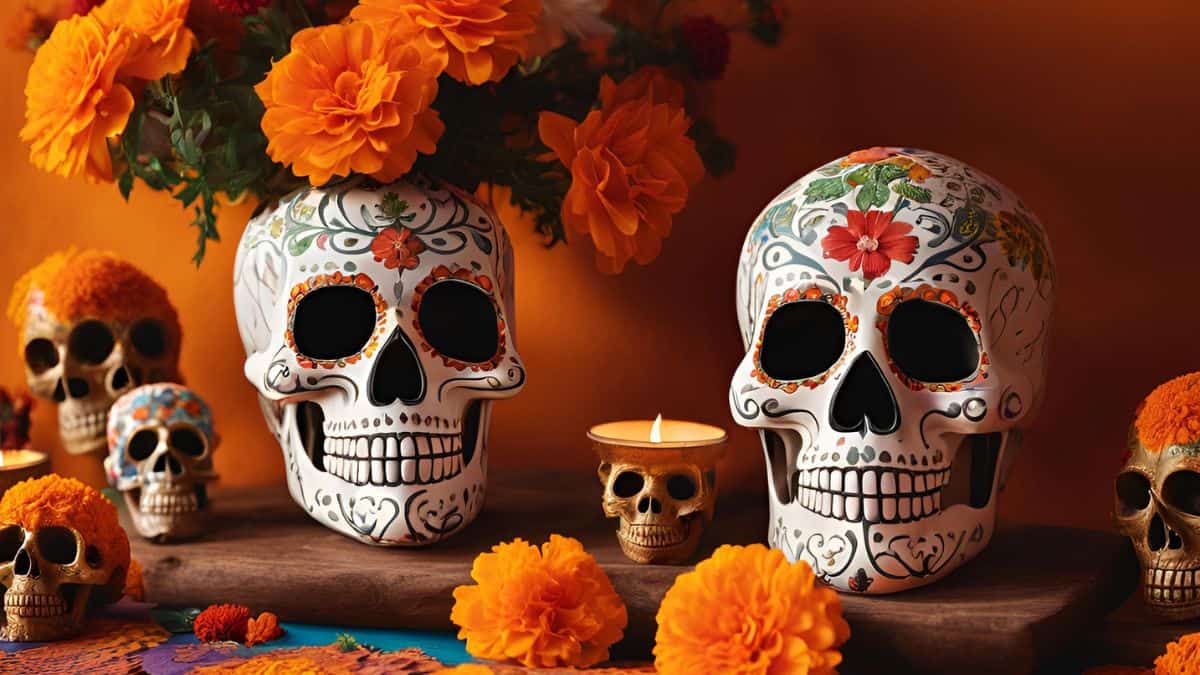
What is Day of the Dead? When is it celebrated? And what are the essential elements of an altar for this colorful Mexican tradition? In this article, we explore 10 key facts about “Dia de los Muertos”, also known as the Day of the Dead.
“Dia de los Muertos”, or the “Day of the Dead”, is one of Mexico’s most iconic and cherished traditions. It’s a celebration that combines indigenous beliefs with Catholicism, resulting in a unique and colorful homage to the deceased. In this article, we will explore 10 fascinating facts about “Dia de los Muertos”.
1. What is Day of the Dead?
“Dia de los Muertos” is a Mexican holiday that honors deceased loved ones. It is a joyful celebration of life and death, where families come together to remember and commemorate those who have passed away.
2. When is the Day of the Dead Celebrated?
While the most well-known dates for “Dia de los Muertos” are November 1st and 2nd, when it is celebrated across Mexico, the preparations for the holiday can start as early as October 27th. Each day leading up to November 2nd has its own significance and purpose.
- October 27th: The altar is dedicated to pets.
- October 28th: Remembering those who died violently, known as “day of the murdered.”
- October 30th and 31st: Honoring unbaptized children and unborn children.
- November 1st: Day of Todos Santos, a time to remember deceased children.
- November 2nd: “Dia de Fieles Difuntos”, when all souls are believed to visit.
3. Where is Day of the Dead celebrated?
“Dia de los Muertos” is primarily celebrated in Mexico, but its influence has spread to many other countries, especially in areas with a significant Mexican diaspora.
4. Calaca
A central figure in “Dia de los Muertos” is the “calaca,” a skeletal figure or skeleton. These playful and often colorful representations of death are used in various art forms, including sugar skull designs.
5. Where Did Dia de los Muertos originate?
The roots of “Dia de los Muertos” can be traced back to indigenous Mexican cultures, such as the Aztecs and the Maya, who had their own rituals and ceremonies honoring the dead. The holiday evolved with the influence of Catholicism after the Spanish colonization of Mexico.
6. When Did Dia de los Muertos start?
The exact origins of “Dia de los Muertos” are ancient, dating back over 3,000 years. However, the modern version of the holiday with its current customs and traditions began to take shape after the arrival of the Spanish in the 16th century.
7. Coco Movie
The animated film “Coco,” produced by Disney and Pixar, brought “Dia de los Muertos” to a global audience. The movie beautifully captures the spirit and traditions of the holiday while telling a heartwarming story about family and remembrance.
ALSO READ. Día de los Muertos: What day is Day of the Dead for Cats?
8. How is “Dia de los Muertos” different from Halloween?
While Halloween and “Dia de los Muertos” share similarities in their themes of death and the supernatural, they are distinct holidays. Halloween is often associated with costumes and the fear of the dead, whereas “Dia de los Muertos” is a celebration of the lives of the deceased, filled with vibrant colors, music, and offerings.
9. “Dia de los Muertos” Altar ideas
A crucial aspect of “Dia de los Muertos” is the creation of altars, or “ofrendas,” to honor the deceased. These altars typically include a variety of elements, each with its own symbolic meaning.
ALSO READ. Día de los Muertos. Key facts about the pre-Hispanic origin of the Day of the Dead
10. Dia de los Muertos flower name
The vibrant orange marigold flower used in “Dia de los Muertos” altars is called “cempasúchil” in Spanish. It is often referred to as the flower of the dead and plays a vital role in guiding the spirits of the departed with its color and aroma.
Dia de los Muertos is a rich and meaningful tradition that blends indigenous customs with Catholicism to create a unique celebration of life and death. It’s a time when families come together to remember their loved ones and create colorful altars filled with offerings and symbolism. Whether you are participating in “Dia de los Muertos” or simply want to learn more about this fascinating tradition, understanding these key facts will deepen your appreciation for this vibrant Mexican holiday.










